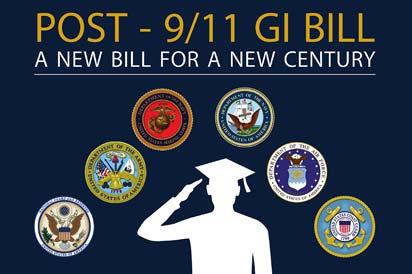Since the signing of the original GI Bill, the program has gone through major changes. None as big as the changes created by the bill’s newest manifestation, the Post-9/11 GI Bill. Benefit payments under the new bill went to more than 290,000 Veterans in the first year.
On June 22, 1944, President Franklin D. Roosevelt signed the Servicemen's Readjustment Act of 1944, commonly known as the GI Bill of Rights.
The Veterans Administration – as it was known at that time -- was responsible for carrying out the law's key provisions for education and training, loan guaranty for homes, farms or businesses, and unemployment pay.
Before the World War II, college and homeownership were, for the most part, unreachable dreams for the average American. Thanks to the GI Bill, millions who would have flooded the job market opted for education instead.
In the peak year of 1947, Veterans accounted for 49 percent of college admissions. By the time the original GI Bill ended, July 25, 1956, 7.8 million of the 16 million World War II Veterans had participated in an education or training program.
In 1984, former Mississippi congressman G. V. "Sonny" Montgomery revamped the GI Bill. The Montgomery GI Bill assured that VA home loan guaranty and education programs continued to work for Veterans of the post-Vietnam era.
In 2009, GI Bill benefits were updated again. The new law, called the Post-9/11 GI Bill, gives servicemembers and veterans with 90 or more days of active duty service on, or after, Sept. 11 2001, enhanced educational benefits to cover more expenses, provide a living allowance, money for books and the ability to transfer unused educational benefits to spouses or children.
For more information about the Post-9/11 GI Bill for Veterans, visit www.military.com/education/gibill




